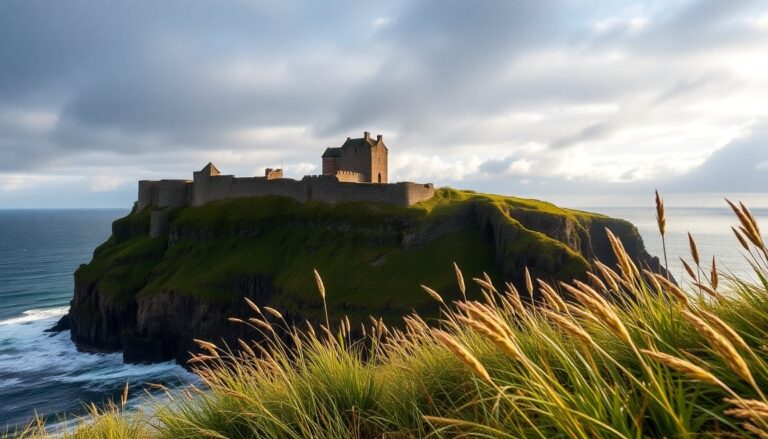Argomenti trattati
Perched atop towering cliffs along the North Sea, Dunnottar Castle stands as a remarkable fortress that has drawn visitors for generations. The castle’s dramatic landscape and rich history appeal to both filmmakers and history enthusiasts. This ancient stronghold not only offers breathtaking views but also embodies Scotland’s storied past, making it essential for travelers exploring this scenic region.
The historical significance of Dunnottar Castle
Constructed in the 15th century, Dunnottar Castle has served as a backdrop for many pivotal events in Scottish history. Its formidable walls have witnessed political intrigue, fierce battles, and enduring legends. This fortress was a stronghold for the Earls Marischal, one of Scotland’s most influential families, and has welcomed notable figures such as William Wallace and Mary, Queen of Scots.
A sanctuary for the Scottish crown jewels
Dunnottar Castle is renowned for its historical significance as the guardian of the Honours of Scotland, the nation’s crown jewels. In the 1650s, during the English Civil War, Oliver Cromwell’s forces posed a serious threat to these priceless artifacts. To protect them, the jewels were ingeniously concealed within the castle, preventing their capture. This act of valor has secured Dunnottar’s place in Scottish history.
Hollywood’s favorite filming location
The breathtaking scenery of Dunnottar Castle has attracted numerous filmmakers over the years. Its dramatic landscape has served as the backdrop for several acclaimed films. Notably, Franco Zeffirelli’s adaptation of Hamlet (1990), featuring Mel Gibson and Glenn Close, utilized the castle’s ruins to enhance the gothic atmosphere, effectively bringing Shakespeare’s narrative to life.
Other cinematic appearances
In addition to Hamlet, Dunnottar Castle has appeared in various films. Notable productions include Victor Frankenstein (2015), featuring James McAvoy and Daniel Radcliffe, The Eagle (2011), starring Channing Tatum, and Mary Queen of Scots (2018), with Saoirse Ronan and Margot Robbie. These films capture the castle’s striking and dramatic character, transporting audiences to an era rich in mystery and heroism while highlighting the rugged beauty of the Scottish landscape.
Exploring Dunnottar Castle
Traveling to Dunnottar Castle is an experience that begins long before reaching the destination. Situated 7 kilometers south of the picturesque town of Stonehaven, visitors embark on a scenic walk along the Aberdeenshire Coastal Trail. This route offers stunning views of dramatic cliffs and the North Sea, setting the stage for a visit to this historical site.
Upon arrival, the castle greets guests with its majestic gate tower, inviting them to explore the ancient ruins. As visitors wander through the weathered walls and crumbling towers, they can almost sense the echoes of history. This journey immerses individuals in a blend of mythology and historical narratives, connecting them with tales of courage, love, and betrayal.
Planning your visit to Dunnottar Castle
Before planning your visit, it is essential to consult the official castle website for up-to-date opening hours and ticket information. Dunnottar Castle is not only a historic site but also a location of stunning natural beauty, making it an ideal destination for photography and exploration.
Accessing Dunnottar Castle
Dunnottar Castle is located on a peninsula characterized by dramatic cliffs that plunge into the North Sea. Visitors can reach the castle by car via the A92, which leads to a limited parking area nearby. Alternatively, travelers may opt for a train to Stonehaven, followed by a scenic walk to the castle.

